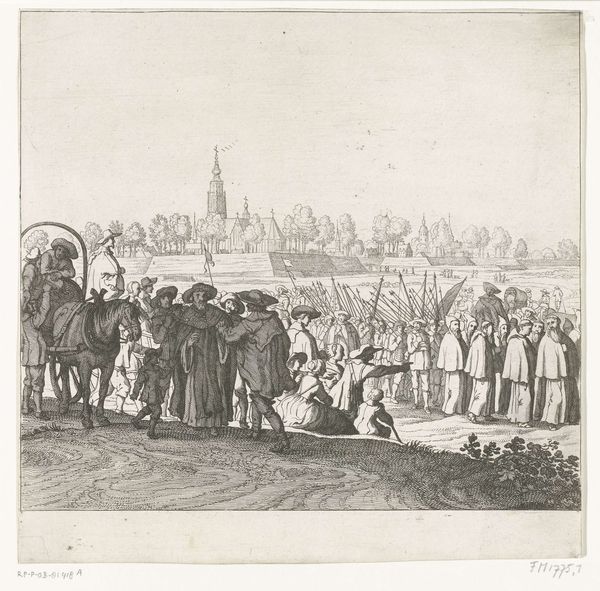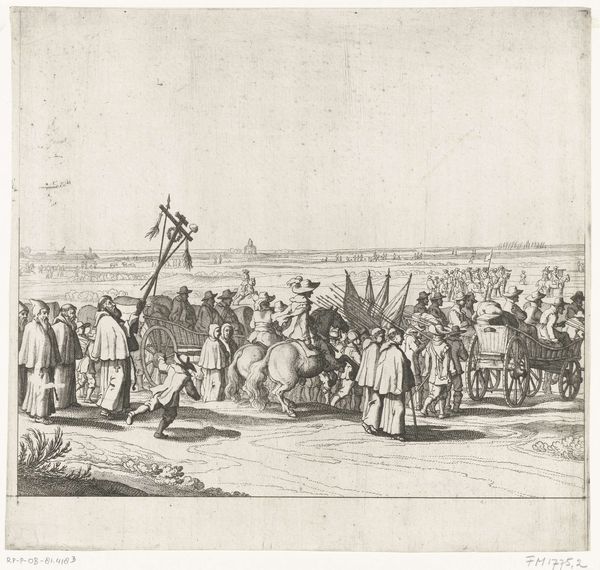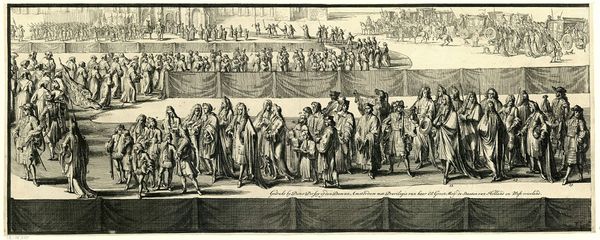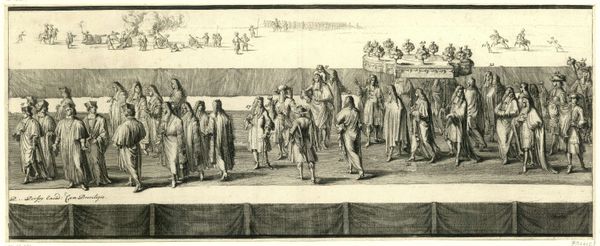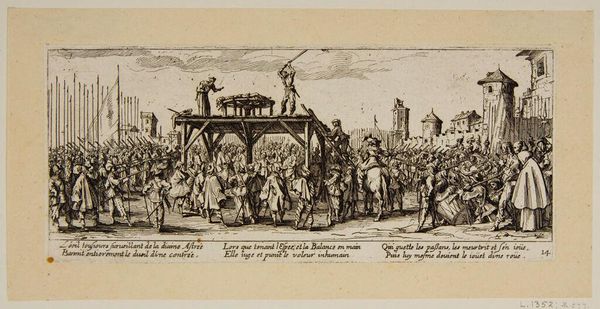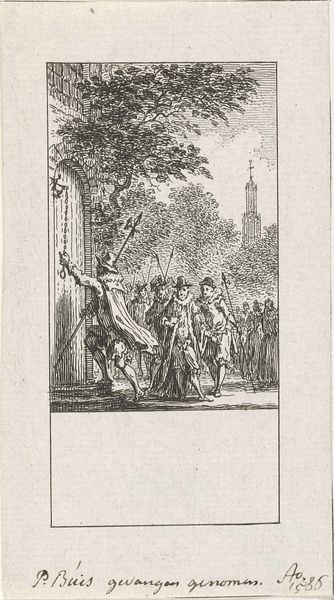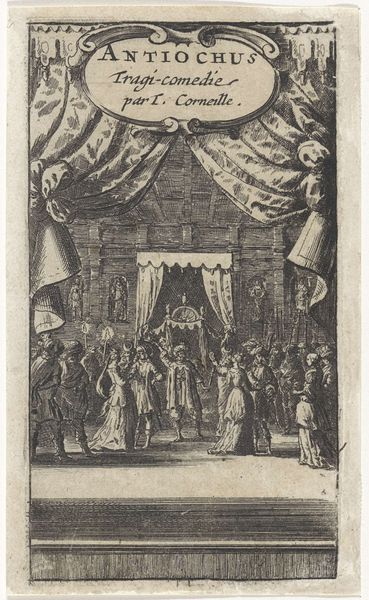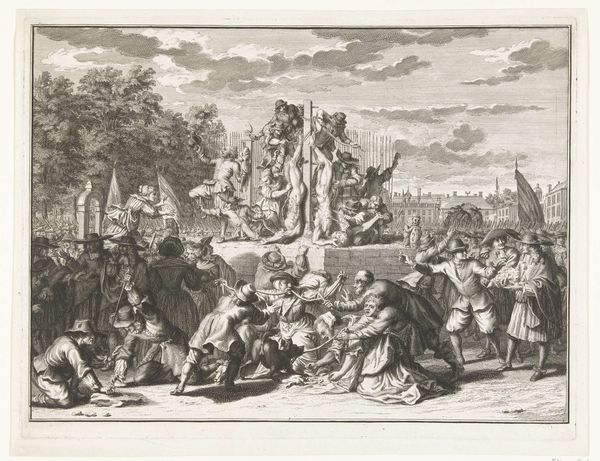
Dimensions: height 350 mm, width 470 mm
Copyright: Rijks Museum: Open Domain
Curator: The chill I get looking at this is intense; there’s a crowd of people in what looks like a festive atmosphere witnessing something utterly gruesome. Editor: It is powerful, isn't it? This print, titled "De doodskist van Ledenberg wordt aan de galg gehangen, 1619" – roughly translated, “The Coffin of Ledenberg Hanged on the Gallows”– probably created between 1895 and 1900, depicts the posthumous punishment of Reinier Ledenberg. Curator: Posthumous punishment? Explain that. And who decided this should become a spectacle? The audacity is unsettling. Editor: Ledenberg was a secretary of the Utrecht Provincial States during a period of intense political and religious conflict in the Netherlands. After his arrest for conspiring against the Stadtholder, Prince Maurice, he committed suicide to avoid trial. As punishment for his alleged treason, his coffin was publicly hanged. This image, rendered through engraving and etching, highlights the use of the body, even in death, as a site for political messaging. Curator: So it is essentially propaganda visualized. Look at the faces in the crowd! They seem to be normal citizens. It's terrifying to think of the level of social acceptance, perhaps even encouragement, of this barbaric practice. Editor: The artist remains unknown. But I agree, the way the composition draws your eye, first to the ordinary townsfolk, then upwards to the spectacle of the gallows and then upwards to the horizon which creates such a contrast to what is occurring in the foreground, only amplifies its social and political implications. What does it mean to create a public space like this? To have political events playing out here? I'd say that it questions who gets to tell history. It asks viewers, “what part do you play?” Curator: It certainly makes one consider the darker elements of societal power and the macabre theater of justice throughout history. I think it makes the viewers of this piece reflect upon the question "How much of society plays the role of a casual bystander or is society complicit?". Editor: Precisely. And art like this serves as a crucial, if disturbing, mirror, reflecting back at us the complexities and contradictions of our past, making us interrogate what might be normalized and valorized today. Curator: An effective piece indeed, even if the scene itself is grim and incredibly sad.
Comments
No comments
Be the first to comment and join the conversation on the ultimate creative platform.
